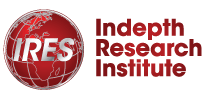Contents
- 1 Humanitarian Coordination: An overview
- 2 What Are the Best Practices for Humanitarian Coordination?
- 2.1 1. Use the Cluster Approach and Ensure Clear Leadership
- 2.2 2. Prioritize Localization and Empower Local NGOs
- 2.3 3. Strengthen Shared Information Management and GIS Mapping
- 2.4 4. Build Surge Capacity and Predictable Support Mechanisms
- 2.5 5. Embrace Inclusive Humanitarian Coordination and Accountability
- 2.6 6. Foster Flexible Funding and Joint Planning
- 2.7 7. Invest in Capacity Building and Learning
- 3 Common Pitfalls in Humanitarian Coordination and How to Avoid Them
- 4 Conclusion
- 5 Frequently Asked Questions (FAQs) on Humanitarian Coordination)
Humanitarian Coordination: An overview
In 2025, the humanitarian landscape is more complex than ever. Across Sudan, Nigeria, and the Sahel, multiple emergencies have tested humanitarian coordination systems. According to the OCHA Global Humanitarian Overview 2025, over 35 million people were affected by crises where coordination breakdowns delayed aid delivery. When coordination fails, confusion costs time—and time costs lives.
Effective humanitarian coordination ensures that aid reaches people faster, resources are used wisely, and duplication is avoided. For African NGOs, understanding and applying the best practices for humanitarian coordination is not just technical—it’s lifesaving.
This guide explores what those practices are, how they work, and how they can transform humanitarian response across Africa.
What Are the Best Practices for Humanitarian Coordination?
Best practices for humanitarian coordination involve established leadership, local partnerships, shared data systems, surge capacity, inclusive participation, and flexible funding.
1. Use the Cluster Approach and Ensure Clear Leadership
Strong leadership and clarity of roles are the backbone of humanitarian coordination. The Cluster Coordination Framework, guided by OCHA and the Inter-Agency Standing Committee (IASC), assigns responsibilities across sectors—such as Health, WASH, and Protection—so all actors know where they fit.
Best practices:
- Define cluster leads and co-leads early.
- Map all actors (NGOs, UN agencies, civil society, and government).
- Hold weekly coordination meetings for real-time alignment.
Example: During Nigeria’s 2023 floods, strong WASH cluster leadership reduced service overlap by 40%, saving resources and speeding water access for thousands of displaced families.
2. Prioritize Localization and Empower Local NGOs


Local organizations are often the first to respond and the last to leave. Yet, they are frequently sidelined in coordination mechanisms.
According to ICVA’s 2024 Localization Review, response times improved by 30% when local NGOs held leadership roles in cluster structures.
Best practices:
- Include local NGOs in cluster and inter-agency coordination meetings.
- Build their capacity through mentorship, funding, and technical support.
- Respect community knowledge and integrate traditional coping mechanisms.
Localization isn’t charity; it’s efficiency. It ensures humanitarian coordination is grounded in local realities.
Humanitarian coordination relies on information: who is doing what, where, and when. Shared systems like 3W dashboards (Who, What, Where), GIS mapping, and open data platforms make coordination transparent and evidence-driven.
Example: During Cyclone Idai in Mozambique, responders used GIS and satellite mapping data to identify stranded communities. This enabled faster logistics and prioritized road repairs for isolated villages.
Best practices:
- Use accessible, real-time dashboards for all clusters.
- Maintain updated GIS datasets of roads, camps, and population movements.
- Use open tools like KoboToolbox, QGIS, and ArcGIS Online for mapping.
When data is shared, coordination shifts from reactive to proactive.
Also read: 5 Powerful Ways GIS Can Help NGOs in Humanitarian Crises
4. Build Surge Capacity and Predictable Support Mechanisms
Crises escalate quickly. NGOs and coordination bodies need predefined surge capacity to respond effectively.
The Norwegian Refugee Council’s Standby Report highlights how pre-trained surge teams cut response times by up to 40% in East Africa.
Best practices:
- Identify standby personnel and partnerships before crises hit.
- Maintain emergency funding reserves or pooled contingency funds.
- Draft coordination SOPs that allow quick role deployment.
Preparedness today ensures coordination doesn’t crumble tomorrow.
5. Embrace Inclusive Humanitarian Coordination and Accountability
The effectiveness of humanitarian coordination depends on inclusivity. Gender, protection, and community feedback mechanisms must be part of every coordination framework.
In Somalia, inter-agency coordination integrated Accountability to Affected Populations(AAP) hotlines. This feedback loop improved trust and allowed rapid correction of aid misallocations.
Best practices:
- Involve women’s groups and persons with disabilities in decision-making.
- Use feedback channels such as SMS surveys or help desks.
- Ensure coordination decisions reflect community priorities, not donor agendas.
Inclusion builds both legitimacy and impact.
6. Foster Flexible Funding and Joint Planning


Rigid funding structures undermine coordination. Instead, humanitarian actors and donors should adopt flexible funding models that allow joint planning and rapid adaptation.
According to OCHA, pooled funding helped bridge critical coordination gaps in Sudan’s 2023 floods response.
Best practices:
- Promote pooled or multi-donor funds.
- Align operational plans across sectors.
- Allow reallocation of resources based on evolving needs.
Flexible funding creates agility—vital in fast-changing humanitarian environments.
7. Invest in Capacity Building and Learning
Coordination is only as strong as the people behind it. Building capacity—through training, simulation exercises, and mentoring—strengthens coordination resilience.
Best practices:
- Conduct simulation exercises to test coordination systems.
- Offer continuous professional development for coordination leads.
- Document and share lessons learned after every response.
Knowledge sharing turns coordination from ad hoc meetings into sustainable systems.
Common Pitfalls in Humanitarian Coordination and How to Avoid Them
| Challenge | Solution |
|---|---|
| Parallel clusters causing duplication | Align with the IASC Cluster Framework and merge where necessary. |
| Donor-driven silos | Encourage joint planning and multi-sector reviews. |
| Token local participation | Provide real leadership roles for national NGOs. |
| Information bottlenecks | Adopt live dashboards and automated data updates. |
Conclusion
When humanitarian coordination works, everything else follows: faster aid, reduced duplication, stronger accountability. The best practices for humanitarian coordination—clear leadership, localization, data transparency, surge readiness, inclusivity, and flexible funding—are more than guidelines; they are the difference between delay and delivery.
In an era of complex crises, NGOs that invest in coordination excellence will lead not only in response but in trust.
Explore our Humanitarian Coordination and Cluster Approach Training to strengthen your organization’s capacity to coordinate effectively and sustainably.
Frequently Asked Questions (FAQs) on Humanitarian Coordination)
1. What is humanitarian coordination?
It’s the system that brings together governments, UN agencies, and NGOs to deliver aid efficiently, prevent overlap, and close response gaps during emergencies.
2. Why is humanitarian coordination critical in response?
It ensures faster, more organized aid delivery, builds accountability, and helps organizations complement—not compete with—each other in the field.
3. What are the key elements of effective humanitarian coordination?
Strong leadership, inclusive participation, reliable data sharing, and sector alignment through mechanisms like the Cluster Approach.
4. How can local NGOs play a stronger coordination role?
By being given leadership opportunities, access to funding, and targeted capacity-building within national and global coordination systems.
5. What tools support humanitarian coordination?
Platforms like OCHA’s 3W Dashboard, KoboToolbox, ReliefWeb, and GIS mapping tools (ArcGIS, QGIS) enable real-time data sharing and response planning.
Eric is a seasoned digital marketing strategist experienced in brand positioning, content strategy and results-driven campaigns. He has collaborated with leading brands and institutions across Africa to amplify their impact. At IRES, he leads strategic communication efforts and campaigns for leaders in public service and governance, humanitarian work and regional development. Email: [email protected]









Comment here